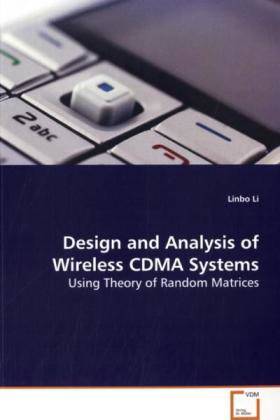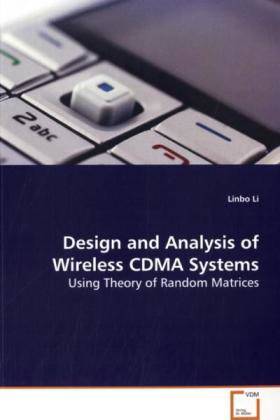
- Afhalen na 1 uur in een winkel met voorraad
- Gratis thuislevering in België vanaf € 30
- Ruim aanbod met 7 miljoen producten
- Afhalen na 1 uur in een winkel met voorraad
- Gratis thuislevering in België vanaf € 30
- Ruim aanbod met 7 miljoen producten
Zoeken
Design and Analysis of Wireless CDMA Systems
Using Theory of Random Matrices
Linbo Li
Paperback | Engels
€ 67,45
+ 134 punten
Omschrijving
CDMA based cellular systems have been widely deployed and CDMA is selected as the air interface of third-generation (3G) cellular system (W-CDMA, cdma2000, TD-SCDMA). With the exponential growth rate of demand, understanding the principles of design and analysis of large CDMA systems has become more and more vital for both receiver designers and network operators. However, for large networks, receivers utilizing advanced signal processing techniques have complexity that scales with the system size. Furthermore, performance analysis of large systems quickly becomes analytically intractable. With the application of the mathematical theory on random matrices, this book studies the problems of low-complexity multiuser receiver design and performance analysis (both information-theoretic and uncoded) for various CDMA systems in the large system regime. This book should be of great interest to researchers and practicing engineers in wireless communication. In addition, as this book explores the exciting cross discipline of random matrices and wireless communication, it will also be useful for mathematicians wishing to see how advanced mathematics shape today's engineering practice.
Specificaties
Betrokkenen
- Auteur(s):
- Uitgeverij:
Inhoud
- Aantal bladzijden:
- 172
- Taal:
- Engels
Eigenschappen
- Productcode (EAN):
- 9783639156492
- Verschijningsdatum:
- 5/06/2009
- Uitvoering:
- Paperback
- Formaat:
- Trade paperback (VS)
- Afmetingen:
- 152 mm x 229 mm
- Gewicht:
- 258 g

Alleen bij Standaard Boekhandel
+ 134 punten op je klantenkaart van Standaard Boekhandel
Beoordelingen
We publiceren alleen reviews die voldoen aan de voorwaarden voor reviews. Bekijk onze voorwaarden voor reviews.











